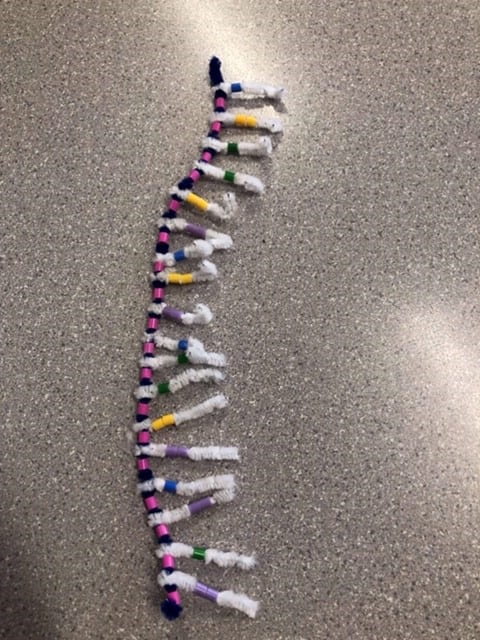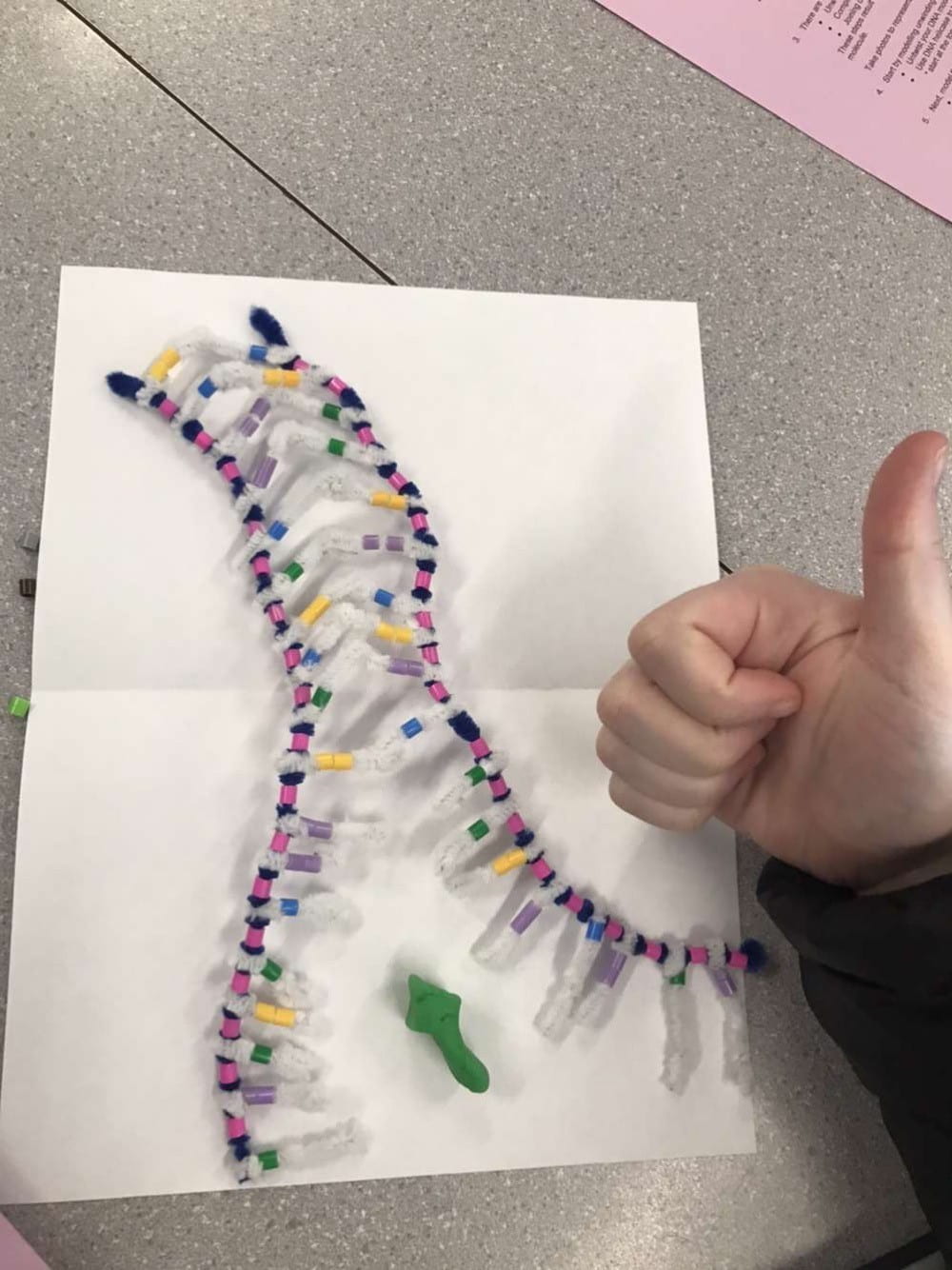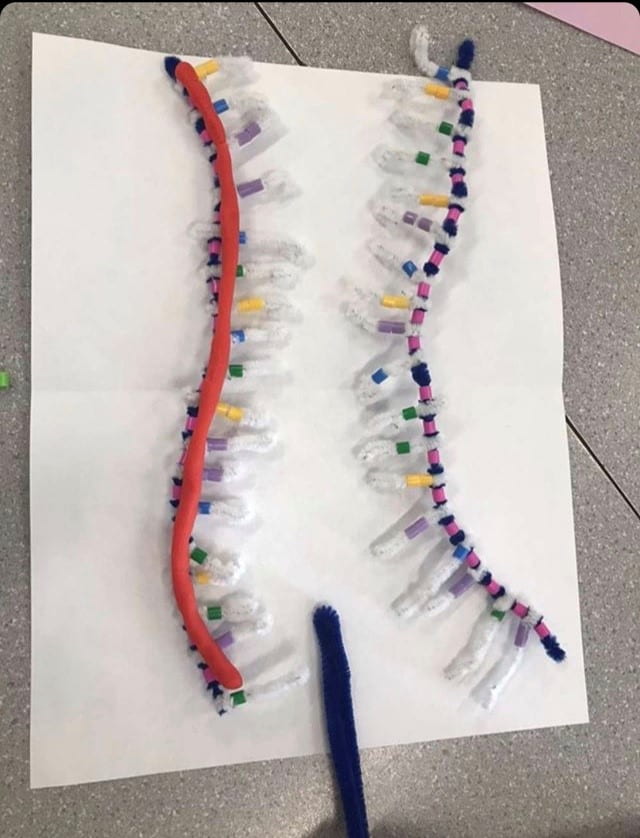


Explain the structure of DNA- use the terms nucleotides, antiparallel strands and complimentary base pairing
DNA is a macromolecule (a polymer of nucleic acids). It is made up of monomer nucleotides which includes a nitrogenous base, a phosphate group and 5-carbon sugar (deoxyribose). It is made up by anti parallel strands in a double helix shape. DNA has backbones on the outside, which are made up of phophates and sugar (deoxyribose.) In the inside of these backbones are complimentary base pairing. The base pairing are bonded together by hydrogen bonds. It connects two separate strands (a single backbone) into DNA. There are two types of bases – purines and pyrimidines – which bond together with their complimentary base. The four types of bases are Adenine, Guanines, Cytosine and Thymine. Adenine always bonds with thymine and Cytosine always bonds with Guanines.
How does this activity help model the structure of DNA? What changes could we make to improve the accuracy of this model? Be detailed and constructive.
Creating a DNA model clearly showed some important pieces of the creation of DNA. We were able to see the two backbones with sugar and phosphate, the hydrogen bonding that took place and the different bases that get matched together. You are able to see step by step the pieces that it takes to make a strand of DNA. Something that could be changed to improve the accuracy would by the white pipe-cleaners that represent the hydrogen bonds. Having the white pipecleaners all the same size would have made the overall shape of the DNA more accurate. As well as, H-bonding is much more complicated then two pipecleaners hooking onto eachother; finding a way to more accurately represent that bonding would make a greater understanding of how the backbones bond together. Lastly, the complimentary base pairing. The beads were not evenly spaced or spread out on the white pipecleaners, causing an inconsistency in the look of the DNA. If we were to try and space out the beads the same on each pipecleaner, we would have a more accurate picture of what DNA looks like.
When does DNA replication occur?
DNA replication is a process that happens before cell division. It works as a semi-conservative process where the strands that are replicated contain on “old/original” strand as well as one new/replicated strand” to create a full new DNA double helix.

Name and describe the 3 steps involved in DNA replication. Why does the process occur differently
Unwinding: This is where the DNA helicase unwinds the double helix. The H-bonds between the base pairing break.

Complimentary Base Pairing: This is where the unzipped strands find new strands to pair with. Nucleotides (which are floating in the nucleus) create new H-Bonds with their new partner strand. This process is caused by the enzyme polymerase.

Joining: This is when the complimentary base pairings join back together to create new strands of DNA. The enzyme DNA Ligase is what joins them together, recreating a double helix to complete the new DNA strand.
The model today wasn’t a great fit for the process we are exploring. What did you do to model the complimentary base pairing and joining of adjacent nucleotides steps in DNA replication? In what ways was this activity well suited to showing this process? In what ways was it inaccurate?
For modeling the complimentary base pairing and the joining of adjacent nucleotides, we used two new blue pipe cleaners (representing the backbone) that matched the base pairs to our split original DNA molecule. This is done by polymerase and ligase. The two new backbones that were created were matched up with the split original DNA molecule creating a replicated DNA strand. This DNA model was well suited to showing how the DNA strand splits into two strands, and reconnects with two new strands creating an identical copy of the original strand. The Unwinding and joining process were very well demonstrated through this model. However, something that was not as accurate was the hydrogen bonding. In real DNA strands, the hydrogen bonds do not hook onto each other to create the base pairs. The individual nucleotides are what creates the bonding, not two strands joining together. As an overall process, the model was an accurate way to see the big picture of DNA replication. However, for the smaller details such as the H-bonding and polymerase and ligase usage, this model was not the most accurate representation.